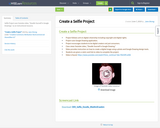
Selfie Project uses Youtube video, "Doodle Yourself in Google Drawings," as an instructional resource.
- Subject:
- Business and Information Technology
- Career and Technical Education
- Material Type:
- Lecture
- Date Added:
- 06/07/2019

Selfie Project uses Youtube video, "Doodle Yourself in Google Drawings," as an instructional resource.
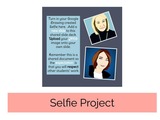
In this lesson, students learn to create digital artifacts in Google Drawings. The video resource, "Doodle Yourself in Google Drawings," gives them step-by-step instruction in how to create a cartoon-like selfie using the design tools in Google Drawings. This can be part of a larger unit in digital citizenship and copyright, or a stand-alone project.
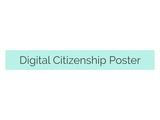
This digital citizenship poster project includes a PDF document with specifications and a grading rubric. This project was created as a final assessment following completion of Common Sense Education's Digital Citizenship units for Grade 6.
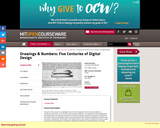
Seminar on a selected topic from Renaissance architecture. Requires original research and presentation of a report. The aim of this course is to highlight some technical aspects of the classical tradition in architecture that have so far received only sporadic attention. It is well known that quantification has always been an essential component of classical design: proportional systems in particular have been keenly investigated. But the actual technical tools whereby quantitative precision was conceived, represented, transmitted, and implemented in pre-modern architecture remain mostly unexplored. By showing that a dialectical relationship between architectural theory and data-processing technologies was as crucial in the past as it is today, this course hopes to promote a more historically aware understanding of the current computer-induced transformations in architectural design.
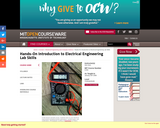
This course introduces students to both passive and active electronic components (op-amps, 555 timers, TTL digital circuits). Basic analog and digital circuits and theory of operation are covered. The labs allow the students to master the use of electronic instruments and construct and/or solder several circuits. The labs also reinforce the concepts discussed in class with a hands-on approach and allow the students to gain significant experience with electrical instruments such as function generators, digital multimeters, oscilloscopes, logic analyzers and power supplies. In the last lab, the students build an electronic circuit that they can keep. The course is geared to freshmen and others who want an introduction to electronics circuits. This course is offered during the Independent Activities Period (IAP), which is a special 4-week term at MIT that runs from the first week of January until the end of the month.
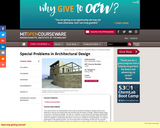
" This class focuses on representation tools used by architects during the design process and attempts to discuss the relationship they develop with the object of design. Representation plays a key role in architectural design, not only as a medium of conveying and narrating a determined meaning or a preconceived idea, but also as a code of creating new meaning, while the medium seeks to establish a relationship with itself. In this sense, mediums of representation, as external parameters to the design process, are not neutral tools of translating an idea into its concrete form. They are neither authentic means of creativity, nor vapid carriers of an idea. Therefore, an important aspect in issues of meaning is how the architect manipulates the play of translating a concept to its concrete version, through the use of a medium of representation. The course is a continuation of the equivalent course taught in the fall semester and specifically focuses on digital media. The course is intended to establish a reciprocal relationship with the design studio, feeding from and contributing to its content."